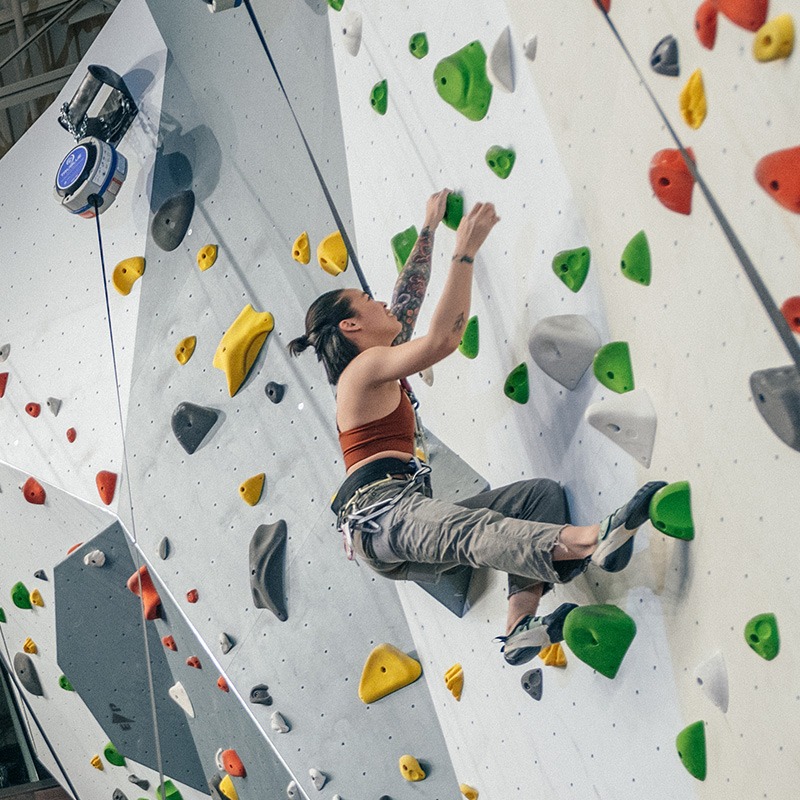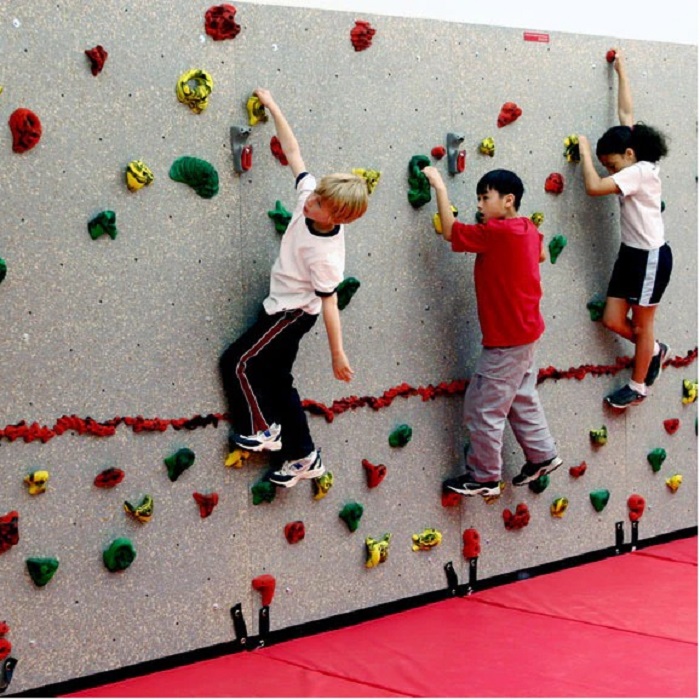The History of Rock Climbing as a Sport
Is rock climbing a sport? The sport of rock climbing has seen a steady climb in popularity over the decades. This ascent started with climbing as a necessary skill for mountaineering. It slowly evolved into a sport in its own right. From the rugged natural landscapes to the modern climbing gyms, the history of rock climbing is rich and varied.

The Origins of Competitive Climbing
Competitive climbing began informally, with climbers challenging each other’s skills on local crags. These friendly contests paved the way for organized competitions. The first official climbing competitions started appearing in the late 20th century. This era was when rock climbing began to emerge as a sport for both spectators and participants.
Climbers pushed their limits, striving for harder, more technical routes. These trials birthed the sport’s recognition on a global scale. Clubs and organizations formed, nurturing the community and refining the standards for competition. These early days set the groundwork for the wide array of disciplines we see today.
Milestones in the Evolution of the Sport
Key milestones have marked the progress of climbing from a pastime to a recognized sport. The introduction of artificial climbing walls in the 1980s was pivotal. These walls allowed for climbing year-round, in all kinds of weather, and expanded the sport’s reach. Climbing movies and high-profile sponsorship deals brought the sport further into the public eye.
The establishment of international competitions, like the World Cup series, gave athletes a stage to showcase their skills. Such events also unified the rules and difficulty grading systems. By the early 21st century, climbing had cemented its place. Rock climbing’s inclusion in multi-sport events and finally, the Olympics, confirmed its status as a true competitive sport.
Different Disciplines of Competitive Rock Climbing
Rock climbing competitions showcase various disciplines, each with its unique challenges and skills. These form the core of this vibrant sport.
Bouldering
Bouldering involves climbing short, challenging routes, called ‘problems,’ without the use of ropes or harnesses. Boulders are typically less than 20 feet tall. Climbers rely on crash pads for safety. This discipline tests problem-solving skills and requires a burst of power and precision.
Sport Climbing
Sport climbing is about climbing a rock face using pre-placed bolts and quickdraws for protection. Routes tend to be longer, and endurance is critical. Climbers need to carefully plan their moves and manage their energy. Sport climbing emphasizes technical ability and stamina.
Speed Climbing
Speed climbing pits climbers against the clock. The goal is to ascend a set route on a climbing wall as fast as possible. This discipline demands explosive strength and swift decision-making. It’s thrilling both for athletes and spectators, adding a time-focused intensity to the competition.

Traditional Climbing in Competitions
Traditional climbing, or ‘trad climbing,’ is less common in competitions but is sometimes featured. Climbers place their own gear to protect against falls, then remove it when they ascend. It tests climbers’ gear knowledge, route-finding skills, and risk assessment abilities. Trad climbing competitions honor the fundamental roots of rock climbing as a sport.
Training for Competitive Rock Climbing
Competitive rock climbing demands rigorous training to reach peak performance. Success hinges on a climber’s dedication to physical and mental growth, as well as mastering various climbing techniques and strategies.
Physical Conditioning
Physical conditioning is key in preparing for rock climbing competitions. Climbers must build strength, flexibility, and endurance to tackle challenging routes. Workouts often include:
- Strength training, focusing on the upper body, core, and grip;
- Cardiovascular exercises to boost stamina and lung capacity;
- Flexibility routines, like yoga or stretching, to improve range of motion;
- Practice climbs that mimic competition routes to build specific muscle groups.
This intense physical regimen helps climbers power through the most demanding parts of a climb.
Mental Preparation
Climbing is as much a mental game as it is physical. Mental preparation is crucial for competitors who must stay composed under pressure. Strategies include:
- Visualization techniques to mentally rehearse climbs;
- Breathing exercises to maintain calmness and focus;
- Goal-setting to map out progression and stay motivated;
- Mindfulness practices to handle stress and reduce fear of falls.
Cultivating a strong mindset empowers climbers to push their limits and overcome obstacles.
Techniques and Strategies
Mastering climbing techniques and strategies is pivotal for competitive edge. Climbers continually refine their skills, which may involve:
- Learning efficient movement patterns to conserve energy;
- Analyzing and practicing specific problems or routes;
- Developing a diverse skill set to adapt to various climbing styles;
- Strategically planning rests and moves during a climb for optimal performance.
By honing their expertise, climbers can navigate the complexities of competition and aim for victory. Consistent training in these areas transforms climbers from enthusiasts to seasoned athletes, ready to face the vertical challenges of competitive rock climbing.
Equipment and Gear for Climbers
Competitive rock climbing requires specialized gear that ensures safety and improves performance. Climbers select their equipment with care.
Essential Gear for Competitive Climbing
For those wondering if rock climbing is a sport, the gear used is a testament to its seriousness. Essential items include:
- Climbing shoes for grip and precision on the rock.
- Harnesses to secure climbers and connect to ropes.
- Ropes that are dynamic, absorbing energy during falls.
- Helmets to protect against falling debris or head injury.
- Chalk to keep hands dry for better hold on the rock surface.
- Quickdraws for climbers to attach their rope to bolt anchors.
This gear helps climbers take on challenging courses safely and with confidence.
Advances in Climbing Technology
The field of rock climbing sports ongoing tech advances. These include:
- Improved shoe designs for diverse climbing surfaces.
- Lighter, stronger hardware like carabiners and camming devices.
- Ropes with enhanced durability and fall protection.
- Smart belay devices that increase safety for climbers.
- Wearable tech that tracks climbs and analyzes performance.
Such tech elevates the sport, making climbing safer and more competitive.

Rock Climbing Competitions Unveiled
For those who question whether rock climbing is a sport, the competitive scene offers a clear answer. Climbing competitions are a vital aspect of the sport—showcasing skill, strategy, and endurance.
Formats and Rules
Competitions follow specific formats and adhere to a set of rules laid out by climbing federations. Key formats include:
- Bouldering comps where climbers solve short problems within a time limit.
- Lead climbing events where climbers aim to reach the top of a wall on a pre-set route.
- Speed climbing contests that challenge climbers to beat the clock on a standardized route.
Rules ensure fairness and safety. Judges watch each climb and score based on completion and technique.
Notable Climbing Competitions Around the World
Climbing has gained global appeal, with several notable competitions:
- The Climbing World Championships showcase the world’s top athletes.
- The World Cup series offers climbers a chance to compete internationally.
- National competitions, like the USA Climbing Nationals, highlight top talent within countries.
These events draw climbers from all over the world and push the limits of what is thought possible in rock climbing. They also provide clear examples of why rock climbing is indeed a sport—a discipline of physical and mental prowess that requires dedication and skill.
The Rise of Climbing in the Olympics
The Journey to the Olympics
The path to the Olympics for rock climbing was not a quick ascent. It took years of advocacy, growth in popularity, and the establishment of climbing as a sport with its own global following. The International Federation of Sport Climbing (IFSC) played a pivotal role. They worked to meet the International Olympic Committee’s (IOC) criteria.
By the time the IOC announced the inclusion of climbing in 2016, it was clear that a new exciting chapter was underway. The decision marked recognition of climbing’s place among the world’s elite sports. And it answered the question definitively for many skeptics: is rock climbing a sport? With its inclusion in the Olympics, the sport had officially received the world’s seal of approval.
Climbing’s Debut at the Tokyo 2020 Games
Rock climbing’s debut at the Tokyo 2020 Games came as a breathtaking spectacle. The event combined speed, bouldering, and lead climbing into a single contest of overall prowess. Athletes dazzled the audience with their strength, speed, and strategy. The world watched as history was made and the climbers fought for the first Olympic climbing medals.
The Community and Culture of Competitive Climbing
Rock climbing is not just a sport, it’s a tight-knit community. Lovers of the sport come together to form a unique culture.
Fostering a Climbing Community
The climbing community grows through local gyms, outdoor areas, and social media. Here, climbers share tips, cheer each other on, and build lasting friendships. Events and meet-ups are common, providing climbers with a sense of belonging.
Role of Clubs and Organizations
Clubs and organizations are the backbone of the competitive climbing scene. They organize events, manage memberships, and offer training. They also play a key role in advocating for climber safety and access rights.
These groups often work with local authorities. Their goal is to ensure climbing areas are protected and sustainably managed. They also set standards for competitions. This maintains a level playing field across the sport.
Sustainability and Environmental Impact
As rock climbing evolves as a sport, sustainability and environmental impact draw attention. The values tied to outdoor ethics play a role in the climbing community. Climbers and organizers are aware of their responsibility towards nature. They strive for a balance between the sport’s growth and conserving natural sites.
Climbing Ethics and Conservation
Climbing ethics are at the heart of the sport’s relationship with the environment. These ethics promote respect for wildlife and habitats. Climbers practice ‘Leave No Trace’ principles. They minimize their footprint while climbing natural rock formations.
Outdoor climbing areas are precious. They need care to stay intact for future generations. Climbers often join clean-up efforts. They help in maintaining trails and climbing sites. This keeps the areas safe and enjoyable for everyone.

